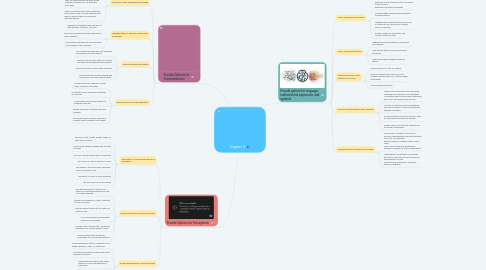
1. Provide Options for Comprehension
1.1. Activate or supply background knowledge
1.1.1. Ask some general questions and have your students brainstorm ideas/knowledge of the listening or reading topic
1.1.2. Read background text, watch a video clip, listen to others discuss the topic of the listening or reading, etc. to stimulate discussion.
1.1.3. Make a link between the topic of the text and students’ own lives and experiences in order to prepare them for successful listening/reading
1.2. Highlight patterns, features, relationships, or big ideas
1.2.1. Highlight or emphasize key elements in text, graphics, diagrams, formulas
1.2.2. Use cues and prompts to draw attention to critical features
1.2.3. Use multiple examples and non-examples to emphasize critical features
1.3. Guide information processing
1.3.1. Use multiple examples and non-examples to emphasize critical features
1.3.2. Provide multiple entry points to a lesson and optional pathways through content
1.3.3. "Chunk” information into smaller elements
1.3.4. Provide interactive models that guide exploration and new understandings
1.4. Maximize transfer and generalization
1.4.1. Provide checklists, organizers, sticky notes, electronic reminders
1.4.2. Prompt the use of mnemonic strategies and devices
1.4.3. Incorporate explicit opportunities for review and practice
1.4.4. Embed new ideas in familiar ideas and contexts
1.4.5. Provide templates, graphic organizers, concept maps to support note-taking
2. Provide Options for Perceptions
2.1. Offer ways to customize the display of information
2.1.1. The size of text, images, graphs, tables, or other visual content
2.1.2. The contrast between background and text or image
2.1.3. The color used for information or emphasis
2.1.4. The volume or rate of speech or sound
2.1.5. The speed or timing of video, animation, sound, simulations, etc.
2.1.6. The layout of visual or other elements
2.1.7. The font used for print materials
2.2. Provide alternatives to audio infomation
2.2.1. Use text equivalents in the form of captions or automated speech-to-text for spoken language
2.2.2. Provide visual diagrams, charts, notations of music or sound
2.2.3. Provide written transcripts for videos or auditory clips
2.2.4. Use visual analogues to represent emphasis and prosody
2.2.5. Provide visual or tactile (e.g., vibrations) equivalents for sound effects or alerts
2.2.6. Provide visual and/or emotional description for musical interpretation
2.3. Provide alternatives to video information
2.3.1. Provide descriptions (text or spoken) for all images, graphics, video, or animations
2.3.2. Use touch equivalents for key visuals that represent concepts
2.3.3. Provide physical objects and spatial models to convey perspective or interaction
2.3.4. Provide auditory cues for key concepts and transitions in visual information
2.3.5. Allow for a competent aide, partner, or “intervener” to read text aloud
3. Provide options for language, mathematical expression, and symbols
3.1. Clarify vocabulary and symbols
3.1.1. Pre-teach vocabulary and symbols, especially in ways that promote connection to the learners’ experience and prior knowledge
3.1.2. Provide graphic symbols with alternative text descriptions
3.1.3. Highlight how complex terms, expressions, or equations are composed of simpler words or symbols
3.1.4. Embed support for vocabulary and symbols within the text
3.2. Clarify syntax and structure
3.2.1. Highlight structural relations or make them more explicit
3.2.2. Make connections to previously learned structures
3.2.3. Make relationships between elements explicit
3.3. Support decoding of text, notations or symbols
3.3.1. Support the use of Text-to-Speech
3.3.2. Allow for flexibility and easy access to multiple representations of notation where appropriate
3.3.3. List and define key terms
3.4. Promote understanding across languages
3.4.1. Make all key information in the dominant language also available in first languages for learners with limited-English proficiency and in ASL for learners who are deaf
3.4.2. Link key vocabulary words to definitions and pronunciations in both dominant and heritage languages
3.4.3. Provide electronic translation tools or links to multilingual glossaries on the web
3.4.4. Embed visual, non-linguistic supports for vocabulary clarification
3.5. Illustrate through multiple types of media
3.5.1. Present key concepts in one form of symbolic representation with an alternative form (e.g., an illustration, dance/movement, diagram, table, model, video, comic strip, storyboard, photograph, animation, physical or virtual manipulative)
3.5.2. Make explicit links between information provided in texts and any accompanying representation of that information in illustrations, equations, charts, or diagrams
